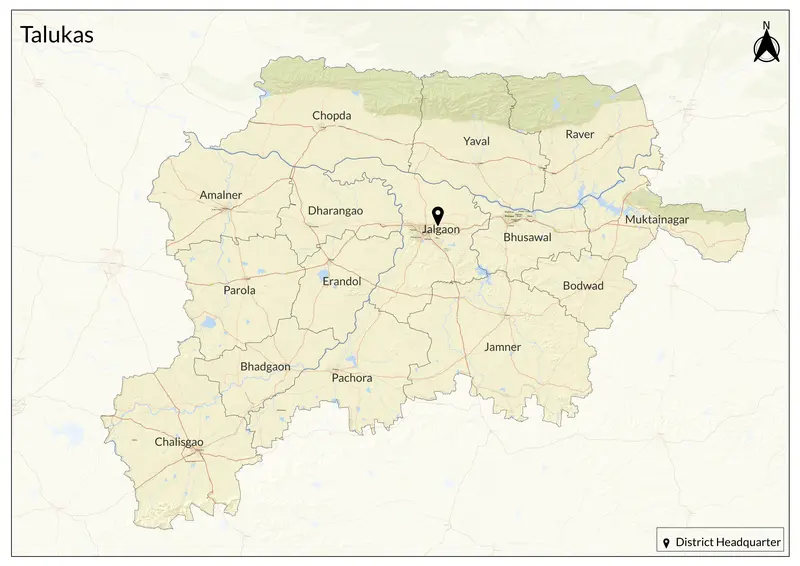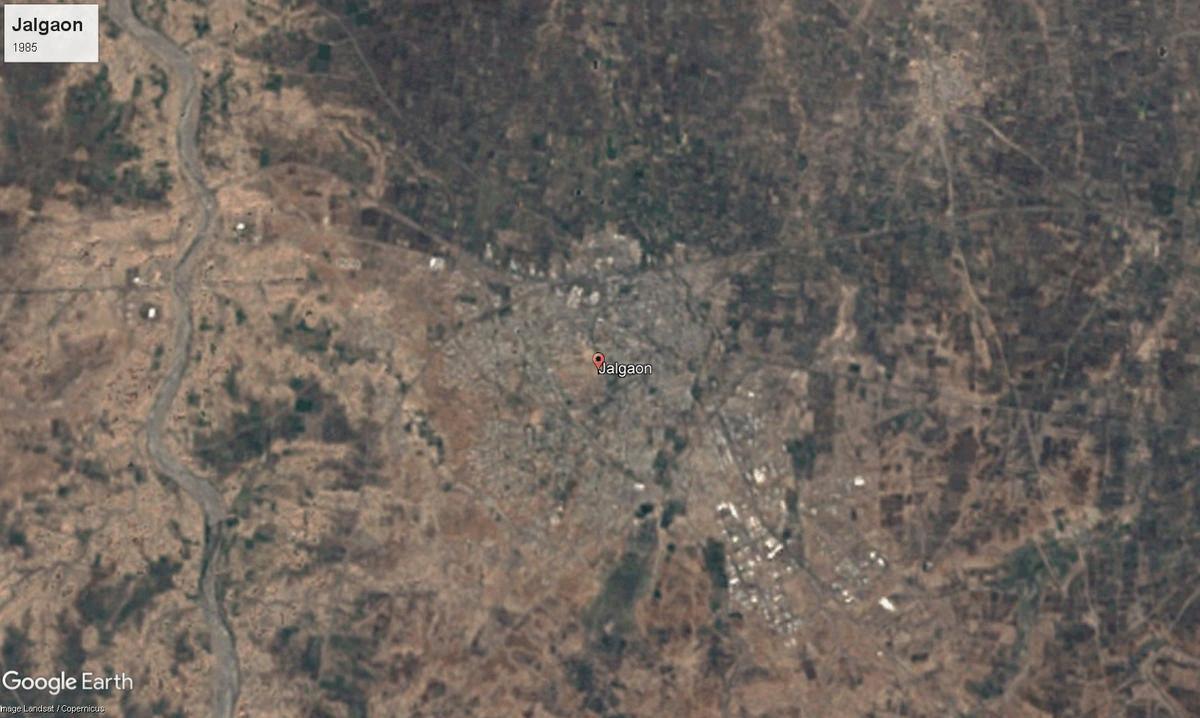Jalgaon

11,765 sq. km
~45.63 lakh (2019)
925 (2011)
~ ₹50,477 crore (2019)
~ ₹1.10 lakh (2019)
Jalgaon district, located in North Maharashtra's Khandesh region, has a rich historical tapestry shaped by the Vakatakas, Yadavas, Delhi Sultanate, Nizams, Marathas, and the British. Once part of Khandesh, it became East Khandesh in 1906 and was renamed Jalgaon after Maharashtra’s state formation in 1960. The name “Jalgaon” possibly derives from local words for "water" (jal) and "village" (gaon), a nod to its rivers and ancient settlements. Over centuries, it saw shifting rule, notably the Battle of Kharda in 1795, which brought Khandesh under Maratha control. (Khandesh word has interesting etymology too: according to Abul Fazl in Ain-i-Akbari, the name Khandesh is derived from the "Khan" title, which was granted by Ahmad-I of Gujarat (1411-1443) to Malik Nasir, the second ruler of the Faruki dynasty. Some sources also suggest that the name originates from the Khandava forest mentioned in the Mahabharata, where Yuvanshava, the ruler of Toranmal (now in Nandurbar district), is said to have fought against the Pandavas.)
Jalgaon was historically part of the Rasika region before coming under the rule of the Farqui Kings, who renamed it Khandesh. It was later ruled by the Vakataka dynasty, the Nizams of Hyderabad, and the Marathas. Under British rule, the district was divided into East Khandesh and West Khandesh in 1906 for administrative purposes, with East Khandesh becoming present-day Jalgaon. Following the 1956 reorganization of states, Jalgaon was included in Bombay State, and after the formation of Maharashtra in 1960, it became a district of the state.
The primary languages spoken in Jalgaon are Ahirani (Khandeshi) and Marathi. Culturally, Jalgaon nurtures a vibrant blend of Marathi and Ahirani folk art, literature, and music. The district is the birthplace of renowned poet Bahinabai Chaudhari, whose work in Ahirani captured the hardships of rural life and shaped regional literature.
Jalgaon is home to several cultural and historical sites. The Gandhi Teerth serves as a research center and museum dedicated to Mahatma Gandhi’s life and teachings. The Maharishi Krishna Dvaipayana Vedvyasa Mandir (Yawal), Changdeva Mandir, Patnadevi Mandir (built by the Yadav dynasty), Mudhai Devi Mandir (known for its Hemadpanti architecture), Satpuda Manudevi Mandir, and the Padmalaya Ganpati Mandir, all of which are very well known in the region.
The district’s landscape is defined by the Tapi and Girna rivers, fertile plains, and the Satpura and Ajanta mountain ranges to the south and west. Jalgaon is surrounded by green fields, dotted with dams like Waghur and Manyad, supporting agriculture and providing scenic beauty. Its proximity to the famed Ajanta Caves increases its exposure to tourists and history lovers. The district is comprised of 15 talukas, each with distinct rural and towns. Hot springs like Unapdev, and architectural temples such as Mudhai Devi add natural and cultural character.
Jalgaon is known as the "Banana City of India" due to its large-scale banana production and export (earning GI recognition for local varieties). Local variety “Jalgaon Bharit Brinjal” also received a GI tag for its distinct culinary identity. The district also has a strong textile industry, particularly in ginning and spinning mills, as cotton is a major crop. The food processing industry, including edible oil, dal mills, and sugar production, contributes significantly to the economy. Additionally, gold jewelry manufacturing is a growing industry, with many artisans and small businesses engaged in the trade. Other industrial sectors include plastic and pipe manufacturing, engineering goods, and small-scale chemical industries.
